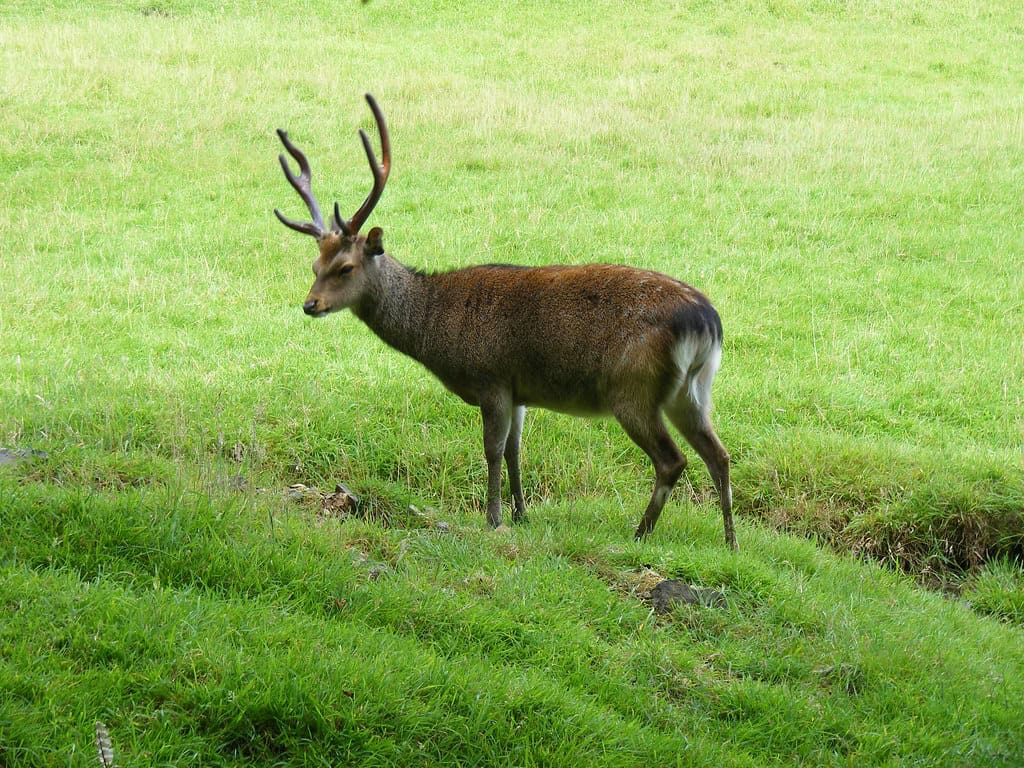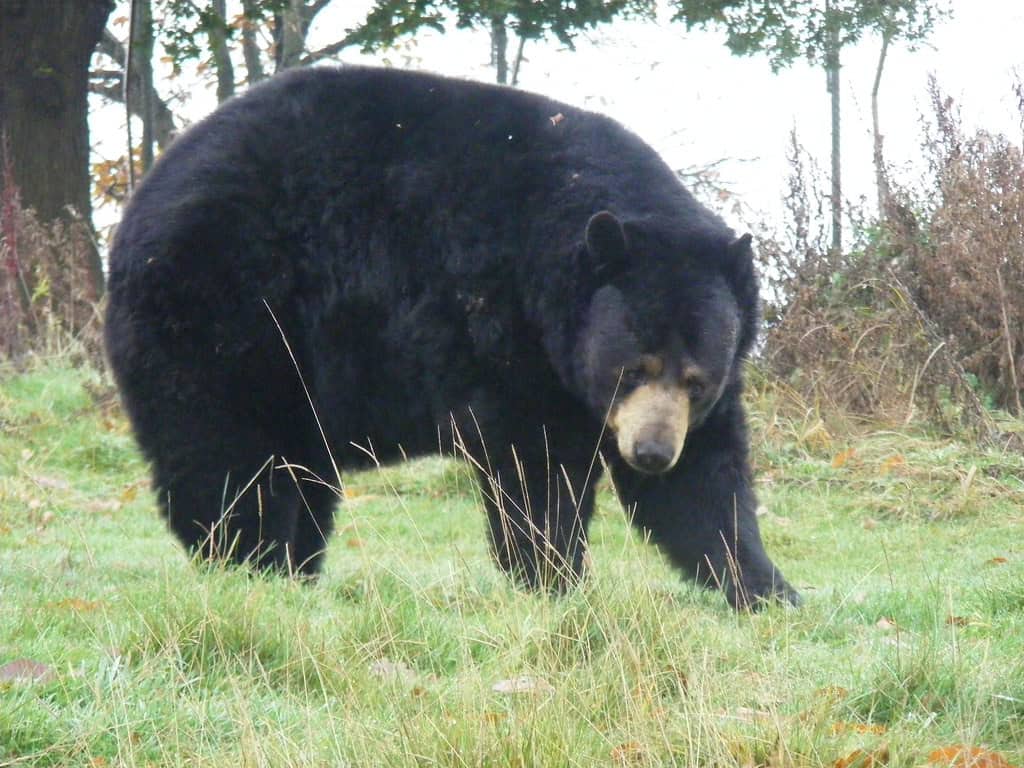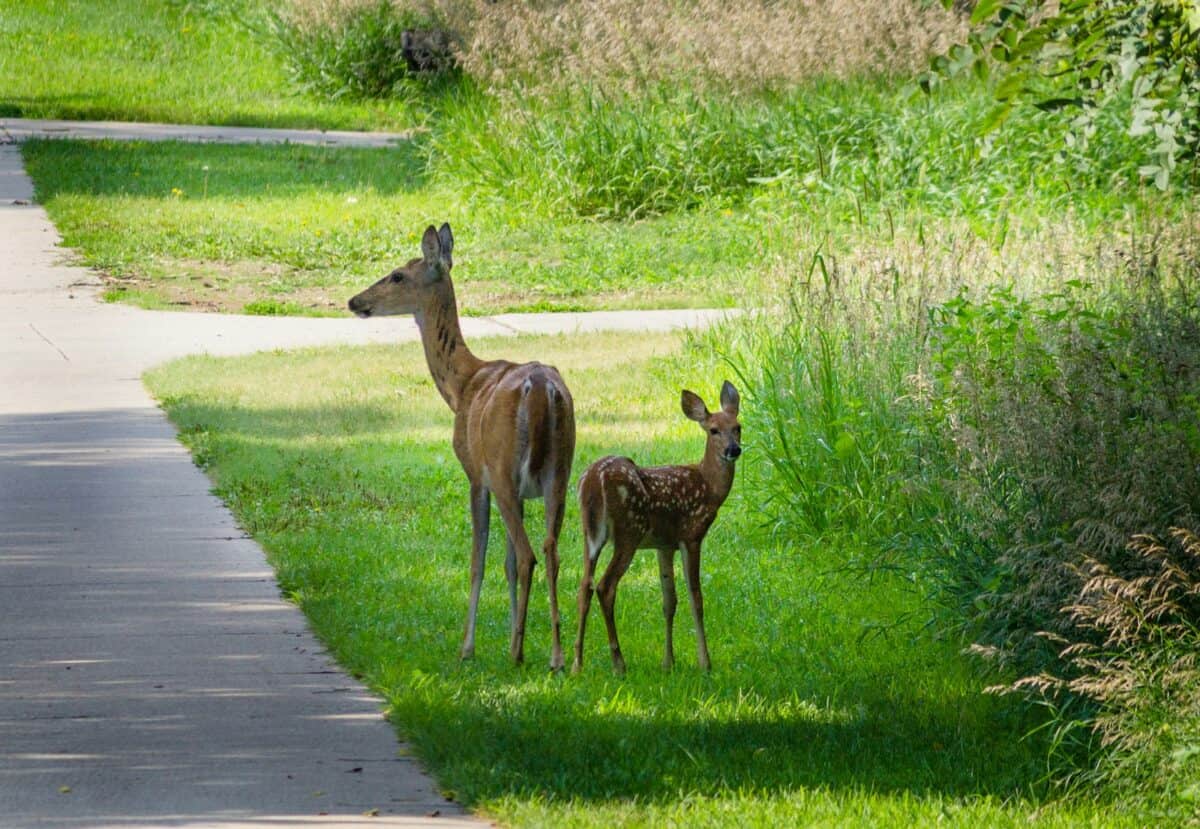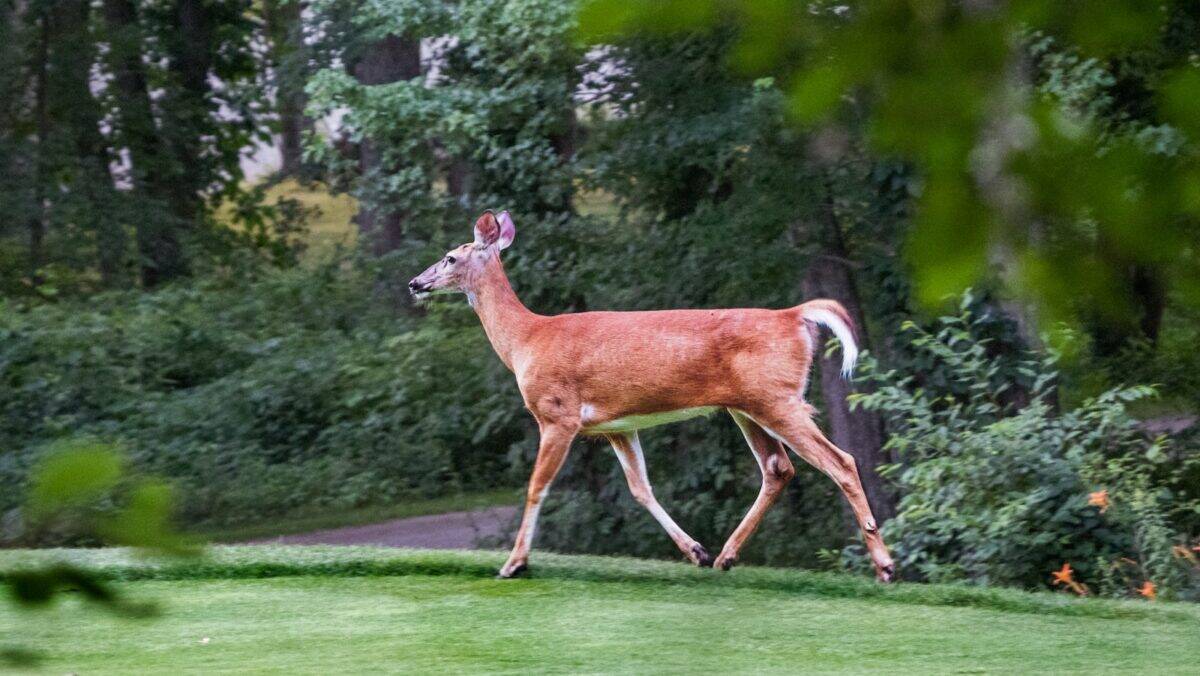Stretching majestically across Interstate 90 near Snoqualmie Pass in Washington state, the largest wildlife bridge in the United States stands as a testament to human innovation in wildlife conservation. This impressive structure, officially known as the I-90 Wildlife Bridge at Snoqualmie Pass, represents a critical milestone in the effort to reconnect habitat fragmented by America’s vast highway system. As vehicles speed along one of the busiest transportation corridors in the Pacific Northwest, animals ranging from elk to salamanders can now safely travel over the highway, following ancient migration routes that pre-date modern roads. This landmark project has become a national model for how infrastructure can be designed to serve both human transportation needs and wildlife conservation goals simultaneously.
The Birth of America’s Largest Wildlife Crossing

The I-90 Wildlife Bridge at Snoqualmie Pass emerged from the I-90 Snoqualmie Pass East Project, a collaborative effort between the Washington State Department of Transportation (WSDOT), the U.S. Forest Service, and various conservation organizations. Construction of the 66-foot-wide, 200-foot-long structure began in 2015 and was completed in 2018, with the final landscaping finished in 2019. The bridge cost approximately $6.2 million as part of a larger $1 billion highway improvement project. Unlike many infrastructure projects that face public resistance, this wildlife crossing garnered widespread support from diverse stakeholders, including transportation officials, environmentalists, and local communities who recognized both its ecological value and public safety benefits.
Engineering a Natural Pathway

What makes this wildlife bridge particularly remarkable is its thoughtful design that prioritizes animal comfort and natural behavior. Unlike typical concrete overpasses, this structure has been carefully engineered to mimic the surrounding forest ecosystem. The bridge is covered with approximately two feet of native soil that supports indigenous vegetation, including young conifers, shrubs, and grasses native to the Cascade Mountains. Large logs and rock piles provide microhabitats and shelter for smaller creatures. This naturalistic design helps create a seamless transition between habitats on either side of the interstate, encouraging animals to use the crossing without hesitation. The structure is also carefully designed to handle heavy snow loads common in the pass, ensuring year-round functionality for wildlife movement.
Reconnecting the Cascade Corridor

The strategic location of the bridge is no accident. It sits at a critical ecological junction in the Cascade Mountains, an area identified by conservation biologists as essential for north-south wildlife movement. Prior to the bridge’s construction, the busy six-lane interstate created a nearly impenetrable barrier for wildlife, fragmenting populations and limiting genetic exchange. This fragmentation was particularly problematic for species with large home ranges like black bears, wolves, and elk, as well as for smaller animals unable to safely navigate highway traffic. By reconnecting these habitats, the bridge helps maintain healthy, genetically diverse wildlife populations throughout the Cascade Range, strengthening ecosystem resilience in the face of climate change and other environmental pressures.
A Diversity of Wildlife Users

Since its completion, wildlife cameras monitoring the bridge have documented an impressive array of animals utilizing the crossing. Large mammals including deer, elk, and black bears have been regular visitors, while smaller species like coyotes, bobcats, and various rodents frequent the structure as well. Even amphibians and reptiles benefit from the natural substrate that maintains appropriate moisture levels for their movement. Scientists expect that the diversity of species using the bridge will continue to increase as vegetation matures and animals become more accustomed to the crossing. The bridge has been particularly significant for species of conservation concern, including wolverines and lynx, which require large, connected landscapes to maintain viable populations. Each successful crossing represents not just a safe journey for an individual animal but contributes to larger conservation goals for these sensitive species.
Reducing Wildlife-Vehicle Collisions

Beyond its ecological benefits, the wildlife bridge serves a crucial public safety function by significantly reducing wildlife-vehicle collisions. Prior to the bridge’s construction, the Snoqualmie Pass section of I-90 saw hundreds of wildlife-vehicle collisions annually, resulting in injury, death, and property damage. Each year in the United States, wildlife-vehicle collisions cause approximately 200 human fatalities, 26,000 injuries, and more than $8 billion in damages. By providing safe passage for animals, the I-90 Wildlife Bridge is expected to reduce these accidents substantially in the corridor. Early data already shows promising trends, with fewer reported collisions in the vicinity of the bridge. This reduction translates to safer driving conditions for motorists and fewer animal fatalities, creating a win-win situation for humans and wildlife alike.
Part of a Larger Ecological Network

While the I-90 Wildlife Bridge stands as the largest of its kind in the United States, it represents just one component of a comprehensive wildlife connectivity initiative in the region. The structure is complemented by numerous smaller underpasses, including enlarged culverts and bridges spanning streams, which provide passage for aquatic species and smaller terrestrial animals. Together, these crossings form an ecological network that addresses wildlife connectivity needs at multiple scales. The project exemplifies the “multiple crossing” approach recommended by conservation biologists, who recognize that different species have different preferences for crossing structures. Some animals prefer the openness of an overpass, while others feel more secure in the enclosed space of an underpass. By providing diverse options, the I-90 corridor accommodates the movement needs of the full spectrum of native wildlife.
Monitoring Success Through Technology

Assessing the effectiveness of the wildlife bridge involves sophisticated monitoring systems that provide researchers with valuable data on animal movement patterns. Motion-activated cameras strategically placed throughout the structure capture images of wildlife crossings, allowing scientists to identify species, track frequency of use, and observe behavioral patterns. Some monitoring efforts also include genetic sampling, which helps determine whether the bridge is facilitating genetic exchange between previously isolated populations. This extensive monitoring not only confirms the structure’s success but also provides crucial information for designing future wildlife crossings. The data collected from the I-90 Wildlife Bridge has already informed projects in other states, creating a feedback loop that improves wildlife crossing design nationwide. Additionally, this monitoring has become an educational tool, with images of successful crossings helping to build public awareness and support for similar projects.
The Economic Case for Wildlife Bridges

Though wildlife bridges require significant upfront investment, economic analyses demonstrate their long-term cost-effectiveness. The average wildlife-vehicle collision costs approximately $8,388 in vehicle damage, not including potential medical expenses, lost work time, or emergency response costs. More severe accidents involving larger animals like elk can exceed $30,000 in damages. When these costs are multiplied by the hundreds of collisions that can be prevented over a wildlife bridge’s lifespan (typically 75+ years), the economic benefits become substantial. One study estimated that the I-90 Wildlife Bridge would pay for itself within 10-15 years solely through reduced collision costs. Additionally, the structure provides economic benefits through reduced habitat fragmentation impacts on commercially valuable wildlife populations, enhanced recreational opportunities, and increased property values in areas where wildlife viewing is possible.
Growing National Movement for Wildlife Crossings

The success of the I-90 Wildlife Bridge has helped catalyze a national movement toward incorporating wildlife crossings into transportation infrastructure. In 2021, the U.S. Congress passed the Infrastructure Investment and Jobs Act, which included $350 million specifically designated for wildlife crossing structures nationwide – the first dedicated federal funding for such projects. States including Colorado, Montana, and California have launched ambitious programs to identify and address wildlife movement barriers on major highways. The I-90 bridge has become a frequent case study in these initiatives, with transportation departments from across the country sending representatives to learn from Washington’s experience. This ripple effect demonstrates how a single successful project can transform approaches to transportation planning across an entire nation, gradually shifting the paradigm toward more wildlife-friendly infrastructure.
Comparison to International Efforts

While the I-90 Wildlife Bridge represents a milestone for the United States, it builds upon decades of experience with wildlife crossings in other countries. Nations like Canada, the Netherlands, and France have been at the forefront of wildlife crossing implementation. Banff National Park in Canada features over 40 wildlife crossings along the Trans-Canada Highway, which have reduced wildlife-vehicle collisions by more than 80% since their construction. The Netherlands has constructed more than 600 wildlife crossings as part of a national ecological network initiative. These international examples provided valuable design insights for the I-90 project, while also highlighting how far the United States still has to go in addressing habitat fragmentation caused by roads. The I-90 Wildlife Bridge represents an important step in bringing American transportation infrastructure up to international standards for wildlife accommodation.
Adapting to Climate Change

Beyond addressing immediate connectivity needs, the I-90 Wildlife Bridge plays a crucial role in wildlife adaptation to climate change. As temperatures warm, many species are shifting their ranges northward or to higher elevations to remain within their preferred climate conditions. These movements often require crossing human infrastructure barriers like highways. By providing safe passage across I-90, the wildlife bridge facilitates these climate-driven migrations, increasing the resilience of numerous species to environmental change. The structure’s location in the Cascades is particularly significant, as mountain ecosystems are experiencing some of the most rapid climate shifts. The bridge forms part of what conservation biologists call “climate corridors” – pathways that allow species to track their preferred habitat conditions as climate zones shift. Without such crossings, many species would face population decline or local extinction as suitable habitat becomes inaccessible.
Community Engagement and Education

The I-90 Wildlife Bridge has become more than just infrastructure; it serves as a powerful educational tool and community rallying point. Local schools have incorporated the bridge into their science curriculum, using it to teach concepts of habitat connectivity, road ecology, and conservation biology. Community-based monitoring programs allow citizen scientists to participate in tracking wildlife use of the crossing. The project has also sparked broader conversations about how human infrastructure affects wildlife and what responsibility we have to mitigate these impacts. Public viewpoints near the bridge provide opportunities for visitors to learn about the structure and potentially observe animals using it. This community engagement aspect demonstrates how ecological infrastructure can connect not just habitats but also people to conservation values and environmental stewardship ethics.
The Future of Wildlife Crossings in America

The I-90 Wildlife Bridge represents both a culmination of decades of research and advocacy and a starting point for a new era in American infrastructure design. As the largest wildlife overpass in the United States, it has demonstrated the feasibility and effectiveness of major investments in wildlife connectivity. The project has influenced transportation planning nationwide, with new wildlife crossings now under development in states including Colorado, Wyoming, California, and Florida. The recent federal funding allocation for wildlife crossings signals a shift toward mainstreaming these structures in highway projects. As climate change accelerates and development continues to fragment natural landscapes, wildlife crossings will become increasingly essential components of resilient ecosystems. The I-90 Wildlife Bridge stands as proof that with thoughtful design and collaboration, we can create infrastructure that serves both human needs and wildlife conservation simultaneously. By reconnecting landscapes divided by highways, we not only protect individual animals from collisions but preserve the ecological processes that sustain healthy ecosystems for generations to come.
- From Coyotes to Roadrunners: Wild Faces of the American Desert - August 11, 2025
- Why Capybaras Are the Most Chill Animals on Earth - August 11, 2025
- What Makes Vervet Monkeys a Pest in Some Tourist Areas? - August 11, 2025

